You can get this exception when the Edmx is in one project and you are using it from another.
The reason is Res://*/ is a uri which points to resources in the CURRENT assembly. If the Edm is defined in a different assembly from the code which is using it, res://*/ is not going to work because the resource cannot be found.
Instead of specifying ‘*’, you need to provide the full name of the assembly instead (including public key token). Eg:
res://YourDataAssembly, Version=1.0.0.0, Culture=neutral, PublicKeyToken=abcdefabcedf/YourEdmxFileName.csdl|res://...
A better way to construct connection strings is with EntityConnectionStringBuilder:
public static string GetSqlCeConnectionString(string fileName)
{
var csBuilder = new EntityConnectionStringBuilder();
csBuilder.Provider = "System.Data.SqlServerCe.3.5";
csBuilder.ProviderConnectionString = string.Format("Data Source={0};", fileName);
csBuilder.Metadata = string.Format("res://{0}/YourEdmxFileName.csdl|res://{0}/YourEdmxFileName.ssdl|res://{0}/YourEdmxFileName.msl",
typeof(YourObjectContextType).Assembly.FullName);
return csBuilder.ToString();
}
public static string GetSqlConnectionString(string serverName, string databaseName)
{
SqlConnectionStringBuilder providerCs = new SqlConnectionStringBuilder();
providerCs.DataSource = serverName;
providerCs.InitialCatalog = databaseName;
providerCs.IntegratedSecurity = true;
var csBuilder = new EntityConnectionStringBuilder();
csBuilder.Provider = "System.Data.SqlClient";
csBuilder.ProviderConnectionString = providerCs.ToString();
csBuilder.Metadata = string.Format("res://{0}/YourEdmxFileName.csdl|res://{0}/YourEdmxFileName.ssdl|res://{0}/YourEdmxFileName.msl",
typeof(YourObjectContextType).Assembly.FullName);
return csBuilder.ToString();
}
If you still encounter the exception, open the assembly in reflector and check the filenames for your .csdl, .ssdl and .msl files. When the resources have different names to the ones specified in the metadata value, it’s not going to work.
